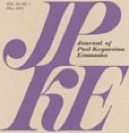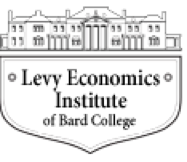Economics for a New Progressive Era
University of Missouri-Kansas City
September 21–24, 2017
Conference site: mmtconference.org
With Support From
Robert Skidelsky and Morton Sosland
UMKC Economics Club
 Journal of Post Keynesian Economics
Journal of Post Keynesian Economics
![]()
Featured Speakers Include
Warren Mosler, Robert Skidelsky, Jamie Galbraith, Jan Kregel, and Randall Wray
Modern Monetary Theory has transformed the economics discipline. Its influence extends beyond economics, reaching deep into the fields of law, history, finance, banking, public policy, and philosophy. Join the world’s leading MMT practitioners, and explore the cutting edge of modern economic thinking.
Call for Papers. Submissions are welcome on any aspect of Modern Monetary Theory, such as: fiscal policy, economic development, employment policy, framing and marketing of MMT, taxation, inflation and reforming the financial system. Please send your individual abstract (200 words max) or panel submission with a short description before June 15 to [email protected].
We look forward to seeing you there!














